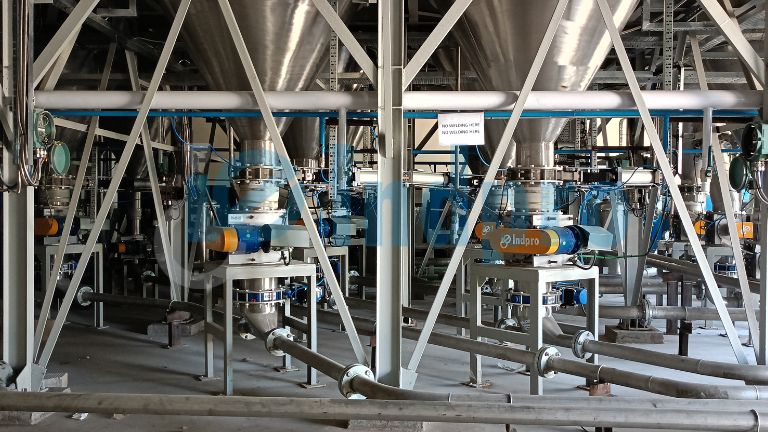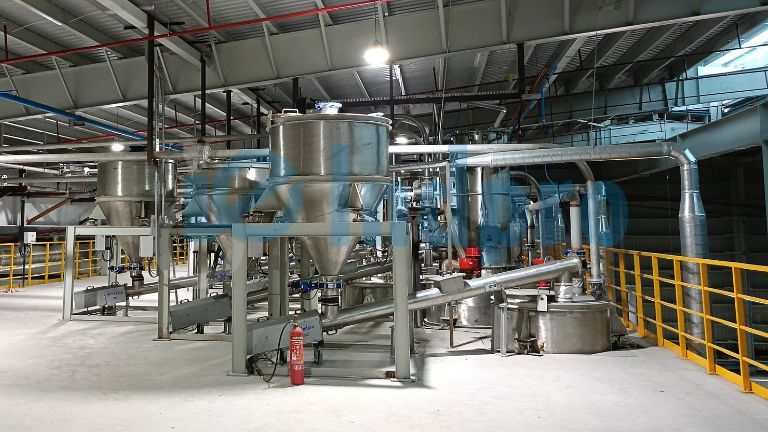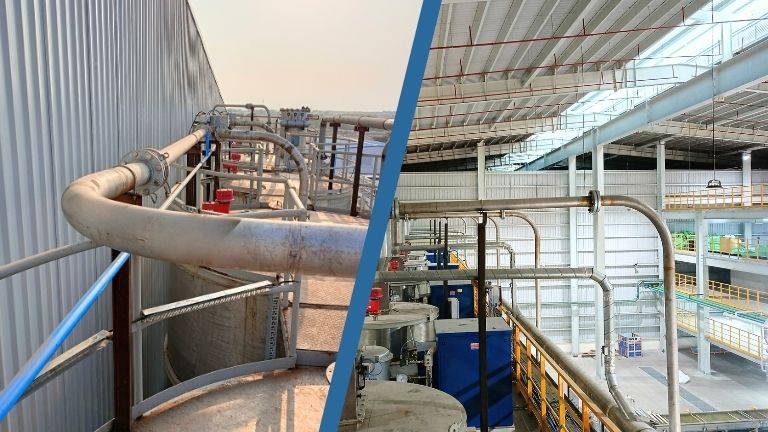Pneumatic Conveying Vs. Mechanical Conveying | How to Choose the Right One for Your Needs
Pneumatic Conveying Vs. Mechanical Conveying
How to Choose the Right One for Your Needs
The Unsung Heroes of Industry
Imagine walking into a bustling factory: products whizzing through production lines, powders flowing like rivers, and granules dancing in sync. Behind this orchestrated chaos are two silent workhorses— pneumatic conveying systems and mechanical conveying systems. These systems are the backbone of industries like food processing, plastic, petrochemical, pharmaceuticals, mining, and chemicals. The real question is – how do you figure out which one suits you best? Let’s unravel their stories, strengths, and quirks.
The Contenders: A Quick Overview
1. Pneumatic Conveying:
Imagine materials surfing on air! It operates by applying compressed gas—either air or nitrogen—to move materials along a closed pipeline. It’s the hare—fast, flexible, and ideal for complex layouts.
Two Key Pneumatic Conveying Techniques: Dense Phase for high-capacity long distance transfers, Dilute Phase for handling a variety of powders.

2. Mechanical Conveying:
Think of traditional systems like belts, screws, chains, and buckets. These systems use physical components to move materials over short to medium distances. They move at a steady pace—simple, visible, and dependable, just like the classic tortoise. These would typically include screw conveyor, tube chain conveyor, vibratory conveyor, slat chain conveyor, bucket elevator, belt conveyor, etc.

Key Factors to Consider
1. Material Sustainability
Mechanical:
- Handles heavy, abrasive, or moisture-sensitive materials (e.g., gravel, wet grains).
- Not ideal for dusty products, dust can lead to high maintenance.
Pneumatic:
- Gentle on fragile materials (e.g., coffee beans, plastic granules, pharmaceuticals).
- Moisture-sensitive powders can clump due to humidity in air.
2. Space & Layout Flexibility
Mechanical:
- Requires significant floor space for belts, buckets, or screws.
- Fixed path—no sharp turns or vertical shifts.
- Requires more space and sturdy structural support.
Pneumatic:
- Compact! Pipelines snake around corners, ceilings, and walls.
- Ideal for retrofitting into tight spaces.
- It is easier to expand or reroute in modular plants.
- Certain components such as blowers require foundations.
3. Efficiency & Energy Consumption
Mechanical:
- Energy-efficiency per tonnage is good.
Pneumatic:
- Higher power consumption due to the energy demands of air compression.
- Ideal for long distances (100+ meters).
4. Product Integrity & Cleanliness
Mechanical:
- Due to their open nature and mechanical interactions, these systems can invite unwanted contaminants like dust and pests.
- May lead to cross-contamination in systems handling multiple products.
- Wear parts (belts, screws) shed particles over time.
- Better for robust or non-fragile materials
Pneumatic:
- Closed pipelines = zero contamination and environmental exposure.
- For fragile materials, vacuum and dense phase conveying provide the perfect low-stress solution.
- Ideal for sensitive materials like pharmaceutical powders or food-grade products
- Ideal for sterile environments (e.g., pharma labs).
Selection Criteria: Side-by-Side Comparison
Comparison: Mechanical vs Pneumatic Conveying
| Factor | Mechanical Conveying | Pneumatic Conveying |
|---|---|---|
| Material Type | Heavy, abrasive, non-fragile | Lightweight, fragile, powdery, granular |
| Space Requirements | High | Low |
| Energy Use | Low (short distances) | High (long distances) |
| Cleanliness | Moderate | Excellent |
| Installation Cost | Lower | Higher |
| System Flexibility | Limited | High |
| Maintenance | Frequent, high cost | Infrequent, low cost |
The Final Word: Which One Should You Choose?
Pick Mechanical If:
- You’re moving gravel, grains, or rugged materials.
- Your factory has space to spare.
- Energy efficiency is a top priority.
- Tonnage per hour requirement is high.
Pick Pneumatic If:
- Gentle mixing preserves material integrity.
- Customizable paddle designs for specific textures (e.g., kneading vs. folding).
- Suitable for heat-sensitive materials.
Conclusion: No One-Size-Fits-All
In the battle of mechanical vs. pneumatic, there’s no outright winner, only the right tool for the job. Like choosing between a pickup truck and a sports car, it all comes down to your use case – whether you navigate tough terrains and need to carry heavy loads, or you go down smooth roads at a fast pace. By weighing factors like material sustainability, space, and energy use, you’ll unlock a conveyor system that keeps your operations humming smoothly.



